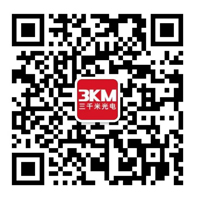Development trends of infrared laser lighting technology and market applications from 2024 to 2030 ( Part 2 )
II, the safety of infrared laser compensation is no longer an absolute advantage, but a basic requirement.
In people's common sense, safety is a basic requirement for infrared laser lighting modules, and laser and safety are a set of mutually opposed and unified relationships. The Class 3B safe infrared laser lighting modules on the market is a new product category invented and created by 3KM optoelectronics in 2016. It uses a VCSEL with a wavelength of 850nm as the light source, and the standard products are a zoom infrared laser lighting modules within 800m and a fixed focus infrared laser lights within 500m. The minimum angle of human eye safety distance is generally within a few meters, mainly used in large shopping malls, squares, airports, stations, checkpoints with dense pedestrian flow Port and other security monitoring night vision lighting.
Although the safety type infrared laser fill light has an absolute advantage within a range of 800m, its market has also eliminated traditional edge emitting infrared laser lights of the same distance. However, due to the continuous competition of low light cameras for market share in close range monitoring and the significant increase in market share of ultra long range infrared laser lighting modules, the market share of safety infrared laser lighting modules is relatively decreasing year by year. Based on current technology, safe infrared laser lighting modules can only meet a night vision illumination distance range of up to 800m, and cannot cover the night vision monitoring fill light field at a longer distance. Therefore, it is impossible to form a larger scale development trend (accounting for about 10% of the market in 2023, as shown in the following figure). Therefore, as the market share of safety infrared laser lighting modules gradually decreases, their advantageous position in the industry also weakens, and they can no longer become an absolute advantage for enterprises in the industry.
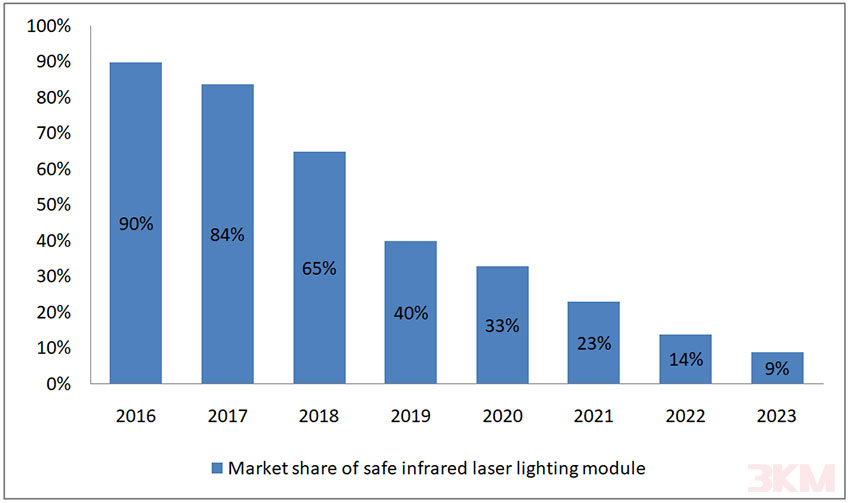
Sales proportion of safety infrared laser lighting modules in the market of 3KM Optoelectronics
Undoubtedly, the safety of laser night vision lighting sources has always been the most important, which is a basic requirement for infrared laser lighting applications and also an admission certificate for some high-end markets. However, safety type infrared laser lighting modules are not the only choice. Due to the small output power of the safety type infrared laser lighting modules, it cannot meet the market demand for ultra long distance fill light. Therefore, in the application of ultra long distance laser night vision monitoring, we will also reduce the energy density of the infrared laser by means of installation position, method, and intelligent control, so as to meet the requirements of a safe distance range and avoid the safety hazards caused by the infrared laser to the human eye.
Therefore, in the practical application of ultra long range infrared laser compensation, what we often refer to as "laser safety" performance refers more to comprehensive safety technical indicators and safety regulatory principles, rather than just the laser safety level of the infrared laser lighting module itself.
III, full clarity and long service life are mandatory requirements.
The full clear infrared laser lighting technology was first launched on the market in 2019. It not only has clear light spot edges, but also solves the problem of virtual focus blurring that cannot be avoided due to the inconsistent optical axis and stride when traditional infrared laser lighting module zoom. It is currently the only laser night vision supplementary lighting technology that can achieve intelligent synchronous zoom and maintain dual clear monitoring images.
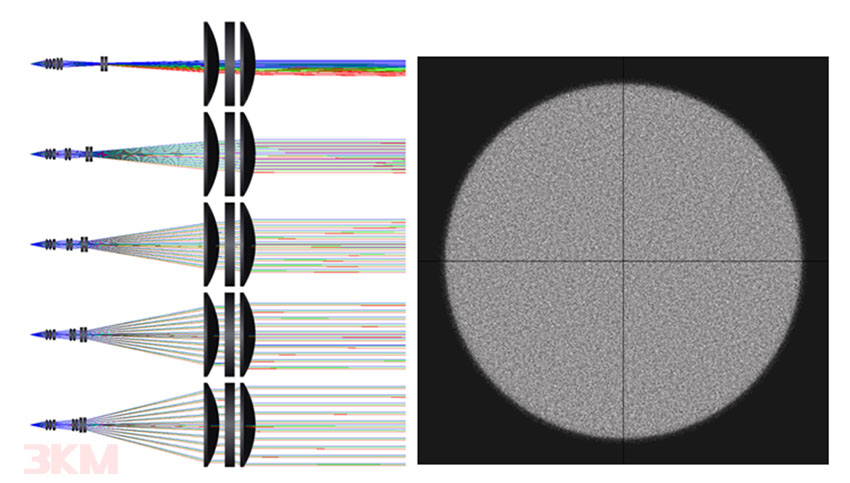
Schematic diagram of full clear infrared laser lighting technology
The full clear laser lighting technology, with its uniform distribution of laser spot energy (>95%), unique speckle elimination technology, and transparent and delicate monitoring image quality (as shown in the figure below), is highly favored by major security monitoring enterprises. In just half a year, it quickly covered all ultra long range infrared laser lighting modules and has become a standard configuration in the ultra long range infrared laser lighting modules and high-end security monitoring night vision lighting market. Other manufacturers are also competing to imitate, and it is believed that in the next few years, the full clear technology will cover the entire field of ultra long range infrared laser compensation market.
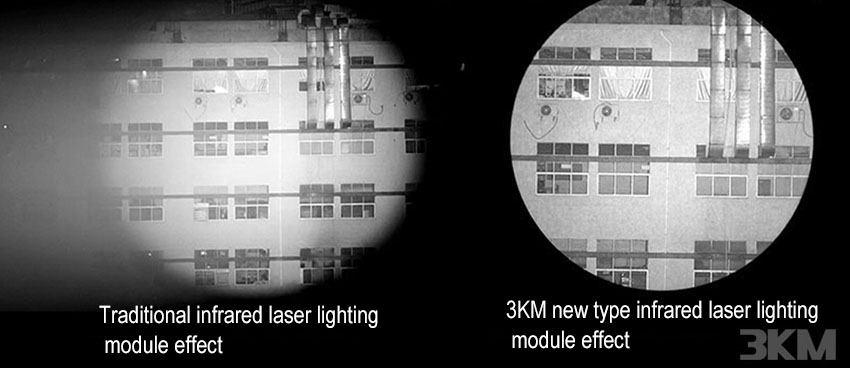
Comparison of the Effect between Full Clear Infrared Laser Lighting Technology and Traditional Infrared Laser Lighting Technology
It is worth noting that in order to seize the market, some manufacturers on the market now claim to use full clear technology, but only the edge of the light spot is clear, not the full clear light spot and image. And this needs to be discovered by the customer during the actual testing process.
As is well known, the normal service life of laser chips is 2-5 years, so why is it still a special concern in the market?
Although the lifespan of laser chips is long, what truly affects their lifespan is the rationality of the structural design of infrared laser lighting modules. Unreasonable design can significantly shorten its service life, reduce output power, and even directly burn out laser chips. So, the service life of the laser chip is not equal to the service life of the entire infrared laser lighting modules.
In addition, service life and continuous service life are two different concepts. Service life generally refers to 8 hours of use per day, while continuous service life refers to 24 hours of uninterrupted use per day. The difference between the two increases exponentially, but market users are prone to confusion. Moreover, users often cannot discover the rationality of the design in a short period of time, and problems need to be gradually exposed in long-term or batch use. Moreover, the difference in service life between 2 and 5 years is more than double, which is a significant profit margin for users.
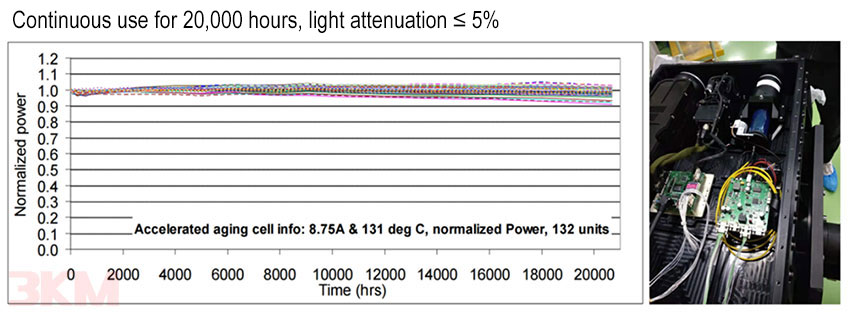
Statistical Table for Service Life Testing of 3KM Optoelectronics Infrared Laser Lighting module
Moreover, due to the fact that laser night vision monitoring equipment systems are generally installed at high altitudes, even in remote and extremely harsh environments, if quality problems occur during use, the maintenance costs and costs incurred may be higher than the price of the product.
Therefore, most enterprise users are very cautious in selecting suppliers and product quality for infrared laser lighting modules, and must pass several months or even more of testing and verification.
